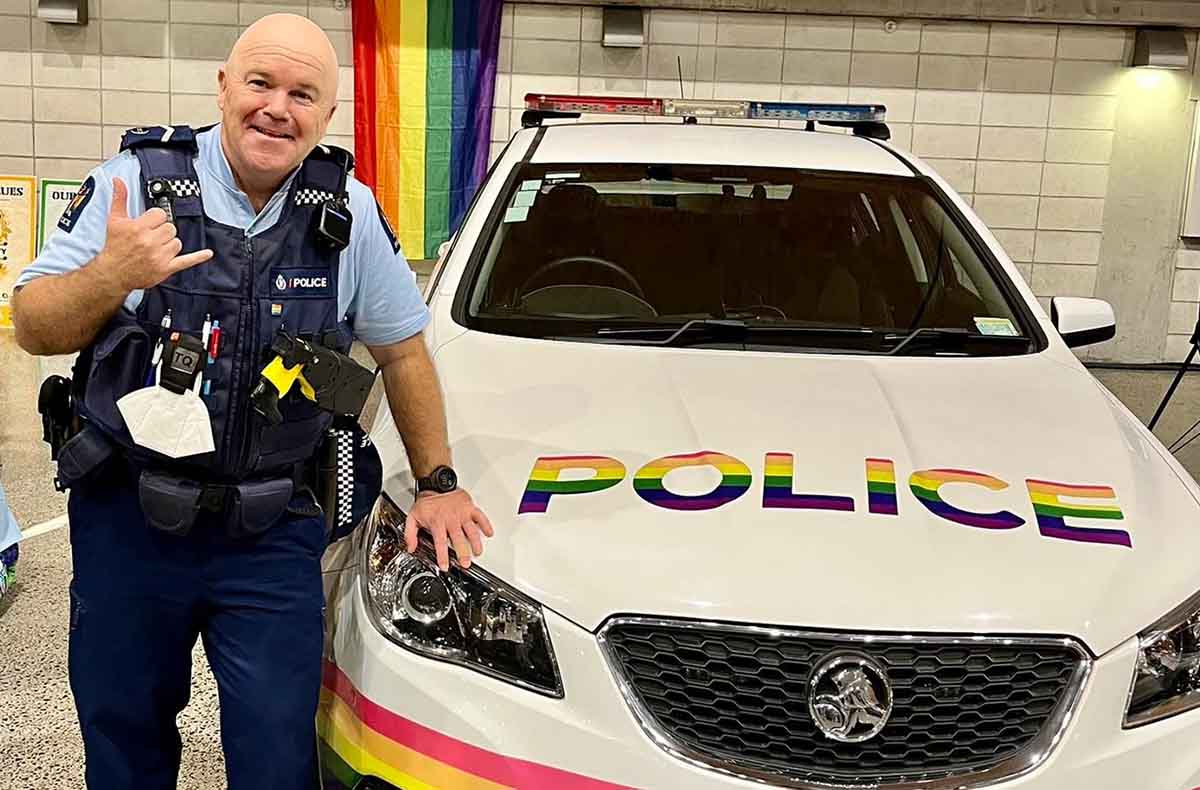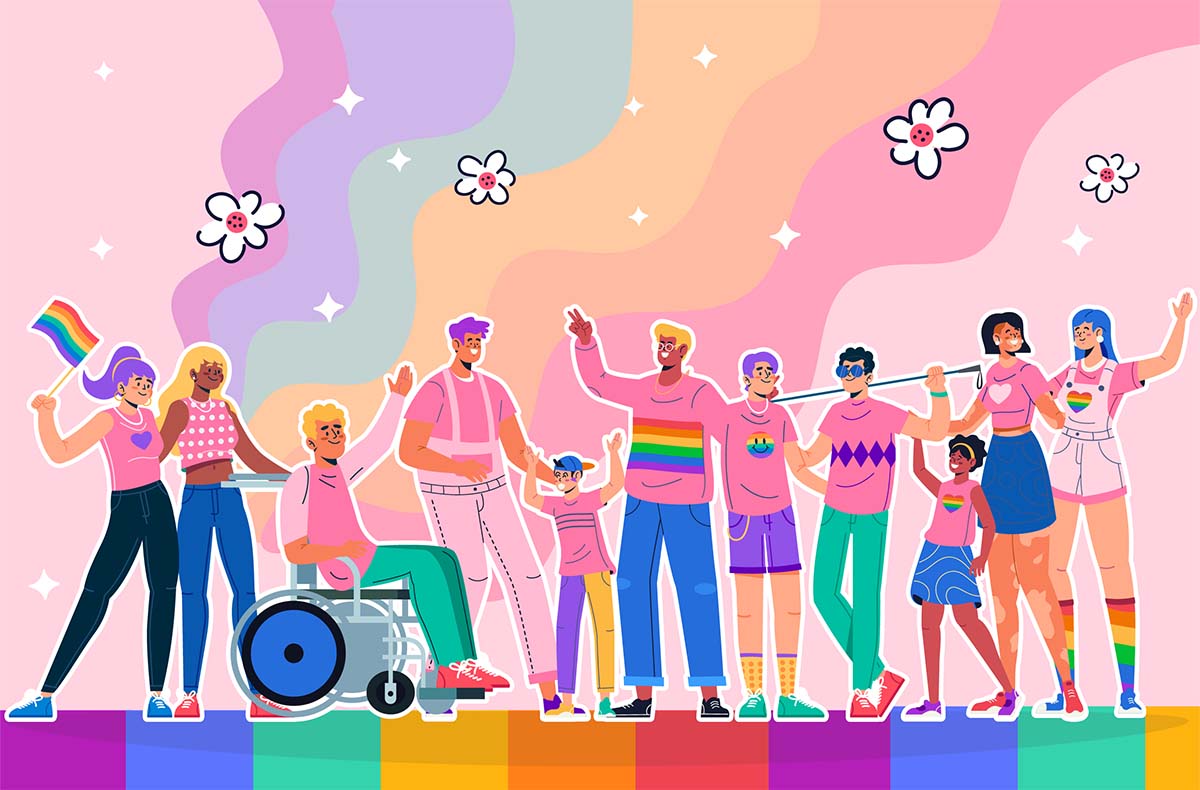
About this time last year, I happened to be walking through a youth expo encouraging teenage school goers from all walks of life to join the New Zealand Police. As I walked past one of our newly liveried cars I casually asked my work colleague, “please take a picture of me with the rainbow car would you?” I thought I could use it in one of my duties as a diversity liaison officer for the NZ Police, a role I perform beyond my everyday duties.
Thinking nothing of the photo—apart from the fact I thought great picture!—I posted it on LinkedIn, to encourage youth (and anyone else) to join the NZ Police and as a show of how we police in New Zealand to those who follow me on social media.
Now, the New Zealand police have a few cars with vehicle livery that celebrate Pasifika people and our indigenous Maori people too—all of which look spectacular and receive plenty of comments in the communities they patrol every day.
A little background on the car itself: The rainbow livery was so well received that it was maintained after the vehicle’s unveiling and participation in the Pride parade in 2018, and the car is still in use for community events and for everyday policing in the Auckland area. There is now also a rainbow police car in the South Island with a few more planned in the future in other policing districts.
Now, clearly the post and picture of yours truly with the rainbow car struck a chord with some people, because almost instantly, I had lots of DMs and posts which spouted hatred towards me, the rainbow car, the rainbow communities, and, as is normal, the police.
I was told I was “a woke douche” and “to do some policing.” Some people advised me on how to approach the police car without being sexually assaulted, or told me I needed a set of chaps and/or a handlebar moustache to match it. There were all sorts of comments on my sexual orientation, preference, and my lifestyle—none of which make any difference to the way I police in all communities.
For the record, my wife and I have been happily married for close to twenty years now, and I am a dad too. I know and have seen first hand the issues for communities and all within those communities when inclusiveness and understanding are not central to them.
My policy is normally one of not to “feed the trolls” that exist on social media, and so I deleted all the posts and comments. But then, upon reflection, I realised that this was a learning opportunity—a moment to make a stand and practice what I preach… about inclusiveness, diversity, kindness and understanding.
It made me think: Imagine the courage it takes to be 15 or 16 years old and be “that kid” and come out, or be outed, be labelled, or not understood… As a police officer of 26 years, the comments were relentless and unforgiving, so I repeat: Imagine the courage of that 15 or 16 year old… kid.
And these issues are just the tip of the iceberg for lots of people in the rainbow communities.
I reposted the picture and the post, admitting I had deleted my original post, and the moment of introspection following that deletion. My post went viral, with over 3.2 million views and over 55 thousand comments. It was one of the biggest social media posts of the year—the police and even headquarters contacted me and advised me: “Have you seen what’s happening?” At the time I was on the Chatham Islands and internet coverage there is a little sparse in places, but when I got back to the mainland, it was brilliant to see so much support for the post.
Many said they wished the police had been like this when they were kids. Members of the rainbow community reached out in gratitude for my post and described the support we could show in our role as police officers as “heart-warming.” Heck, even the Prime minister of New Zealand, the Rt Hon Chris Hipkins, posted on the pic with a “Bryan, you are a bloody legend” comment!
People spoke to me of their children, some of whom had tragically taken their lives when they weren’t able to find an ally or support from anyone, let alone those in authority.
Let’s put it in perspective: The rates of suicide and self-harm in New Zealand are high by OECD standards. Homosexual youth rates of mental distress, suicidal and self-harm behaviours have been measured to be up to 12 times the rate for heterosexual youth. Rates for trans* (transgender or gender-queer) people, are even higher.
A report commissioned and published as part of the Ministry of Health’s Suicide Prevention Research Fund in 2012, found that LGBTQIA+ people have a higher lifetime risk for mental health problems, including depression, anxiety, suicide and self-harm, substance misuse and eating disorders, than their peers.
Research shows that there are a number of different factors that contribute to increase the risk of suicide in LGBTQIA+ communities, especially in young people, such as growing up in harmful environments, being rejected at home, school, church or by other communities, being bullied, the lack of access to safe or supportive spaces and the lack of mental health care.
It is the responsibility of everyone, to create safe and nurturing environments for all people. Many LGBTQIA+ people face discrimination, bullying, social exclusion and other challenges, that could lead to them developing mental health problems.
Negative life experiences can result in mental health issues, such as depression, anxiety, suicidal thoughts or behaviour (whether you are LGBTQIA+ or not) and it is important to seek help as soon as possible—and be able to seek that support from people in your community. Rep. John Lewis put it very aptly when he said, “separate is not equal” in an editorial for the Boston Globe in 2003.
So this is why I am a diversity liaison officer for the NZ Police—and why I will proudly be an ally until my last day on Earth (as a police officer or a civilian). Upon reflection I probably owe a debt of gratitude to all those people who “contacted me” about the rainbow car picture. It reaffirmed to me that I will continue to post about my roles in the police, and make sure that if people see me, know me or hear me, that they will always have my help and support “to be safe and feel safe” as a police officer and as a fellow citizen on this planet.
Remember the definition of Ally here: A person who confronts heterosexism, sexism, homophobia, biphobia, transphobia and heterosexual privilege in themselves and others out of concern for the wellbeing of LGBTQIA+ people.

